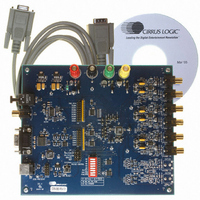CDB4365 Cirrus Logic Inc, CDB4365 Datasheet - Page 25

CDB4365
Manufacturer Part Number
CDB4365
Description
EVALUATION BOARD FOR CS4365
Manufacturer
Cirrus Logic Inc
Specifications of CDB4365
Number Of Dac's
6
Number Of Bits
24
Outputs And Type
6, Differential
Sampling Rate (per Second)
192k
Data Interface
Serial
Dac Type
Voltage
Voltage Supply Source
Analog and Digital
Operating Temperature
-40°C ~ 85°C
Utilized Ic / Part
CS4365
Description/function
Audio D/A
Operating Supply Voltage
5 V
Product
Audio Modules
For Use With/related Products
CS4365
Lead Free Status / RoHS Status
Contains lead / RoHS non-compliant
Lead Free Status / RoHS Status
Lead free / RoHS Compliant, Contains lead / RoHS non-compliant
Other names
598-1779
DS670F2
4.5
4.6
Interpolation Filter
To accommodate the increasingly complex requirements of digital audio systems, the CS4365 incorporates
selectable interpolation filters for each mode of operation. A “fast” and a “slow” roll-off filter is available in
each of Single, Double, and Quad-Speed modes. These filters have been designed to accommodate a va-
riety of musical tastes and styles. The FILT_SEL bit is used to select which filter is used (see the
Plots” on page 45
When in Hardware Mode, only the “fast” roll-off filter is available.
Filter specifications can be found in
De-Emphasis
The CS4365 includes on-chip digital de-emphasis filters. The de-emphasis feature is included to accommo-
date older audio recordings that utilize pre-emphasis equalization as a means of noise reduction.
shows the de-emphasis curve. The frequency response of the de-emphasis curve will scale proportionally
with changes in sample rate, Fs if the input sample rate does not match the coefficient which has been se-
lected.
In Software Mode the required de-emphasis filter coefficients for 32 kHz, 44.1 kHz, or 48 kHz are selected
via the de-emphasis control bits.
In Hardware Mode only the 44.1 kHz coefficient is available (enabled through the M2 pin). If the input sam-
ple rate is not 44.1 kHz and de-emphasis has been selected then the corner frequencies of the de-emphasis
filter will be scaled by a factor of the actual Fs over 44,100.
for more details).
-10dB
Gain
0dB
dB
Figure 16. De-Emphasis Curve
Section
3.183 kHz
T1=50 µs
F1
, and filter response plots can be found in
10.61 kHz
F2
T2 = 15 µs
Frequency
Figures 24
CS4365
Figure 16
to 47.
“Filter
25



















